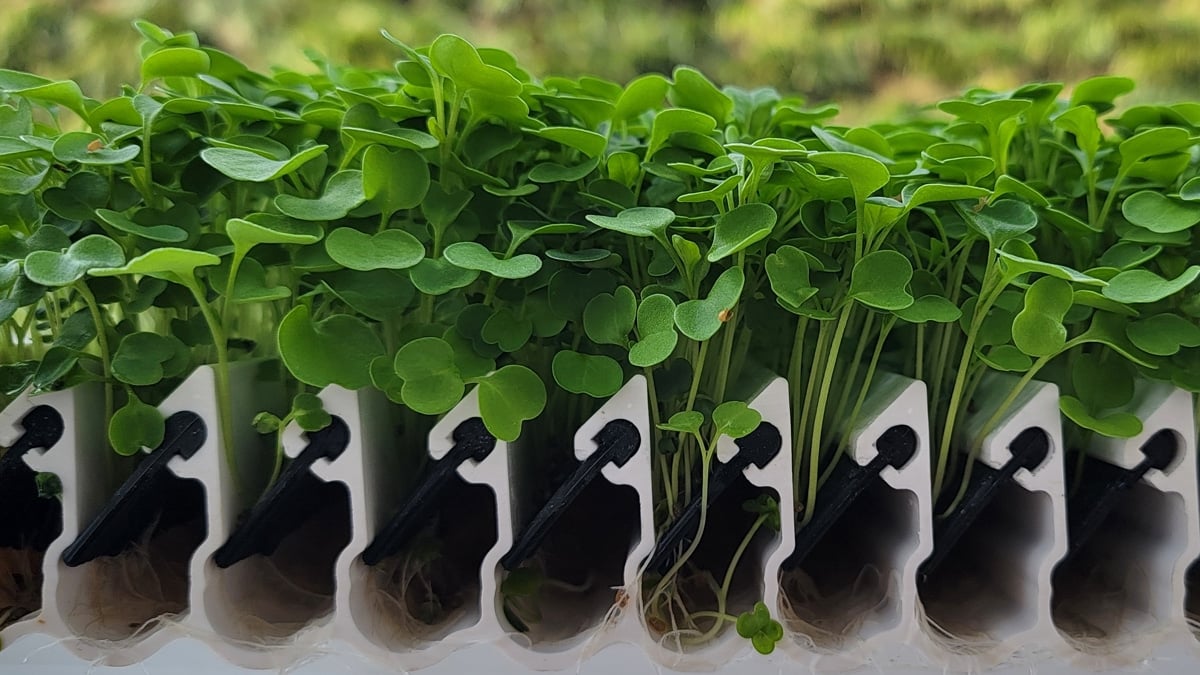Key Takeaways
- KAPPA AgTech has launched Silicone Substrate to completely and permanently replace disposable growing media like peat, coco coir, and rockwool, for crops including leafy greens, microgreens, and strawberries.
- The substrate becomes a durable, reusable component of the growing apparatus, and can be used to grow plants from seed, clone, or root stock without any additional growing media.
- Silicone Substrate can be used in USDA Organic certified facilities, and eliminates the pest and disease vector inherent to disposable growing media.
- Silicone Substrate suspends plants above the water line, enabling oxygenation at the top of the root zone, and preventing overwatering.
- It is a versatile mass-customization approach, suitable for greenhouses and vertical farming, and ensures easy maintenance.
KAPPA AgTech Introduces Silicone Substrate to Replace Disposable Media
KAPPA AgTech has recently introduced Silicone Substrate to improve crop cultivation efficiency and sustainability. Schuyler Milton, the founder of KAPPA AgTech, discussed the benefits and applications of this new product.
Versatile Substrate for Various Crops
Silicone Substrate from KAPPA AgTech is designed to support crops that traditionally require disposable growing media like peat, such as leafy greens, microgreens, and strawberries. “Silicone Substrate can be tailored to each application, matching the crop and irrigation requirements precisely,” said Milton. “It is designed to become a durable component of the facility, replacing the need for the constant influx and waste generated by disposable growing media.”
Organic Growing with Reduced Contamination Risks
Silicone Substrate is particularly suited for USDA Certified Organic growing practices due to the absence of synthetic inputs from synthetic disposable media. “Silicone is inert, has no interaction with the nutrient chemistry, and is not consumed in the growing cycle,” Milton stated. “Using a durable substrate like this dramatically simplifies farms’ supply chains compared to importing peat and coco coir from thousands of miles away.” Additionally, the substrate's properties further help reduce contamination risks, as silicone limits the surface area for mold and algae growth, simplifying cleaning and reducing the potential for disease spread among crops.
Impact on Irrigation and Growth
Silicone Substrate suspends plants above the irrigation water line, maintaining a pocket of air for consistent oxygenation. This prevents the risk of overwatering, a common issue with various growing media. “You can't overwater because the silicone doesn’t get saturated like growing media around the plant stem,” Milton noted. This feature promotes efficient water use and simplifies nutrient chemistry, supporting sustainable agricultural practices.
Applications in Greenhouses and Vertical Farming
Currently, KAPPA AgTech's Silicone Substrate is primarily used in greenhouses but is also being trialed in several customized vertical farming and hydroponic systems. “Today, we provide our Silicone Substrate mainly to greenhouses, but indoor vertical farming has an even greater need for eliminating the mess of growing media in addition to eliminating the pest and disease vector that disposable growing media brings into these otherwise tightly controlled facilities,” Milton said.
Simplified Maintenance and Broad Applications
The substrate does not break down like disposable growing media, and so it avoids clogging irrigation systems and simplifies filtration for recirculating systems; all adding up to easier maintenance throughout the growing cycle. “Silicone Substrate can be used in every application of hydroponics, aeroponics, aquaponics, etc., and will greatly simplify the operations and maintenance labor compared to using a disposable growing media like peat,” Milton explained. This feature allows for easy integration into existing farming operations without significant modifications, offering an efficient option for growers.
Discover more here.



1 Comment